Abstract
Substitutability is a construct borrowed from microeconomics that describes a continuum of possible interactions among the reinforcers in a given situation. Highly substitutable reinforcers, which occupy one end of the continuum, are readily traded for each other due to their functional similarity. Complementary reinforcers, at the other end of the continuum, tend to be consumed jointly in fairly rigid proportion, and therefore cannot be traded for one another except to achieve that proportion. At the center of the continuum are reinforcers that are independent with respect to each other; consumption of one has no influence on consumption of another. Psychological research and analyses in terms of substitutability employ standard operant conditioning paradigms in which humans and nonhumans choose between alternative reinforcers. The range of reinforcer interactions found in these studies is more readily accommodated and predicted when behavior-analytic models of choice consider issues of substitutability. New insights are gained into such areas as eating and drinking, electrical brain stimulation, temporal separation of choice alternatives, behavior therapy, drug use, and addictions. Moreover, the generalized matching law (Baum, 1974) gains greater explanatory power and comprehensiveness when measures of substitutability are included.
Keywords: microeconomics, choice, substitutability of reinforcers, generalized matching law
Full text
PDF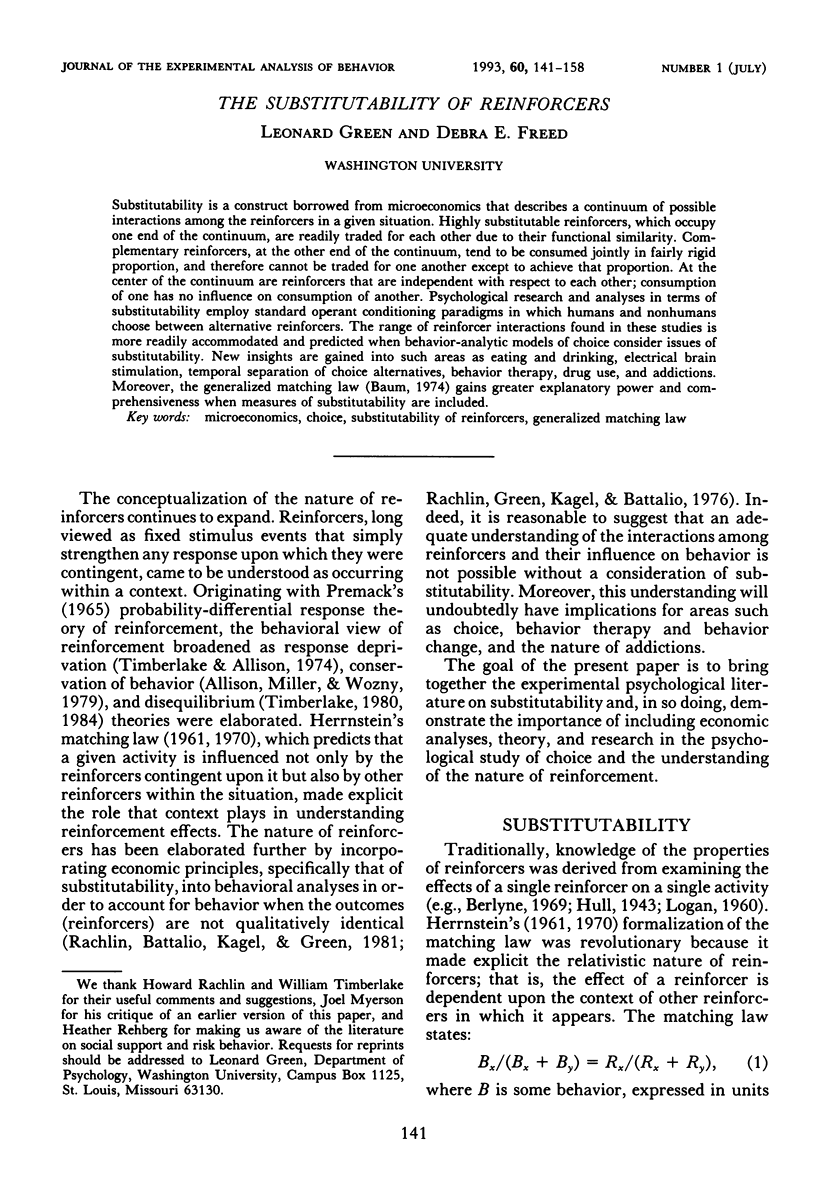
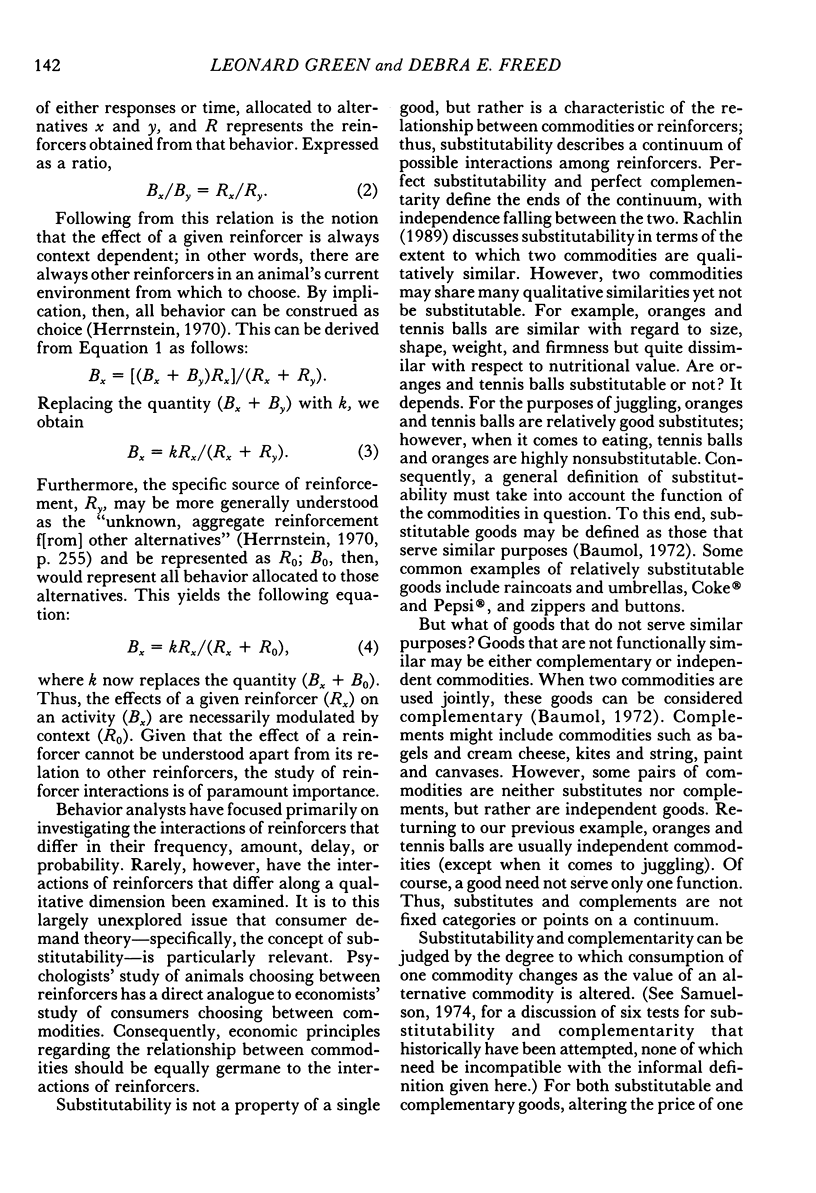
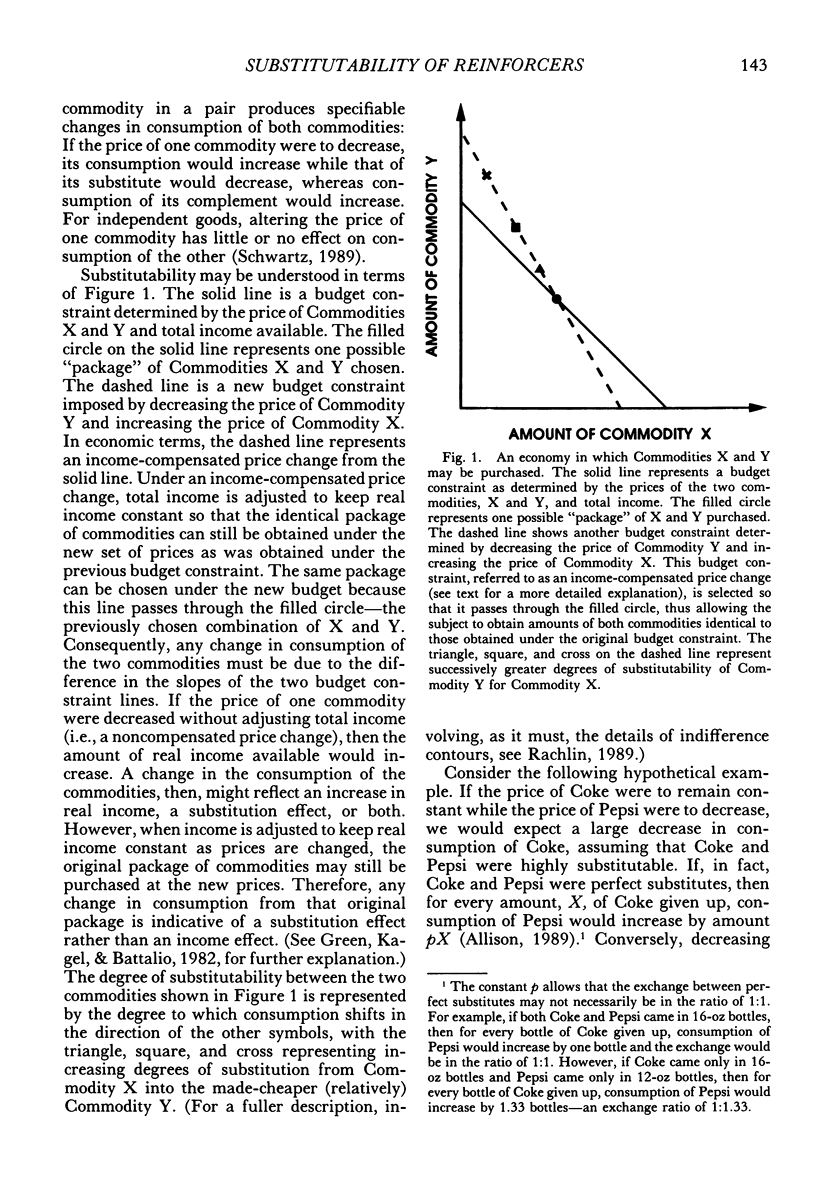
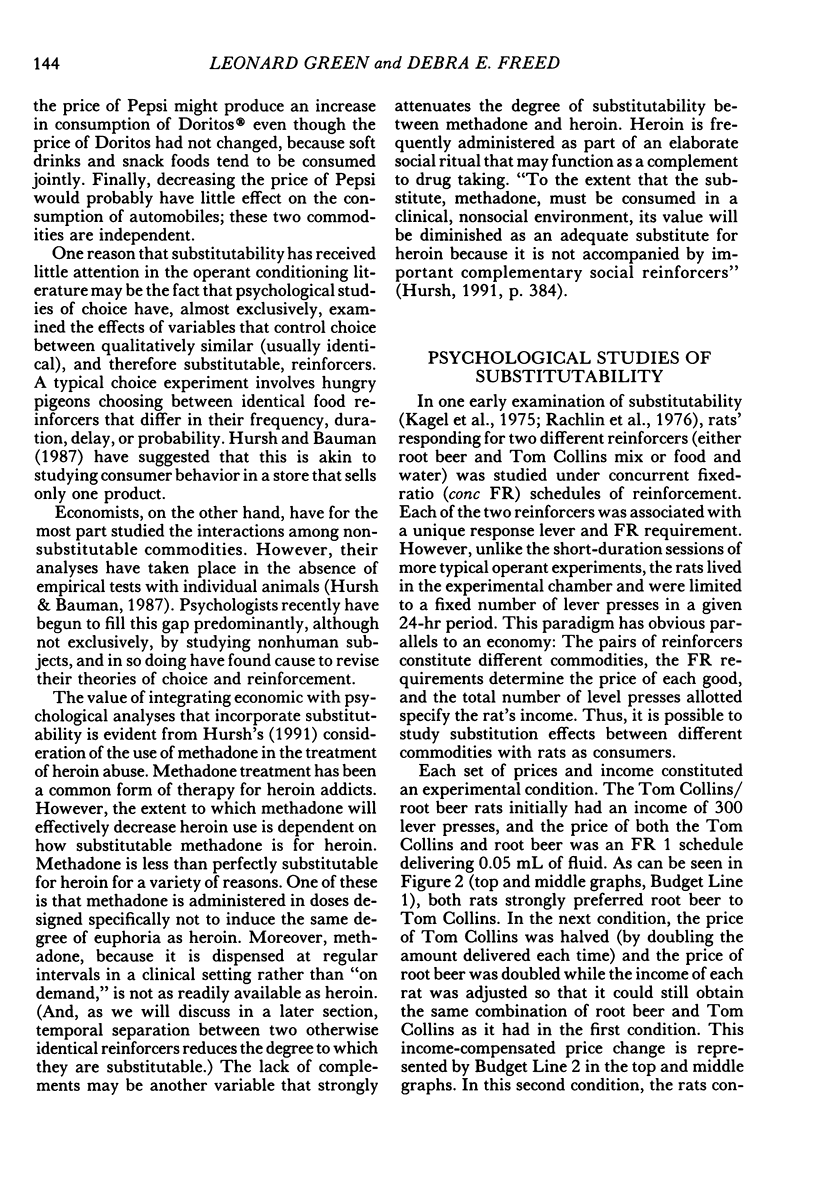
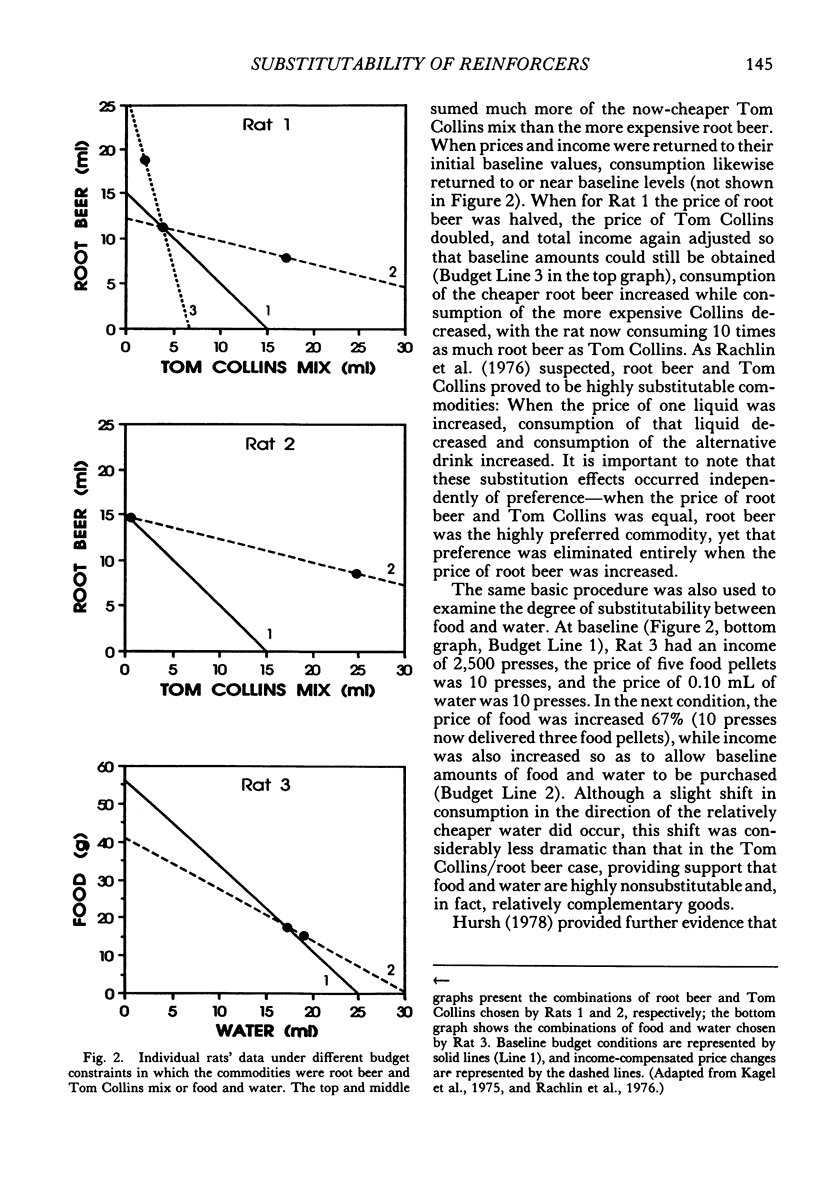
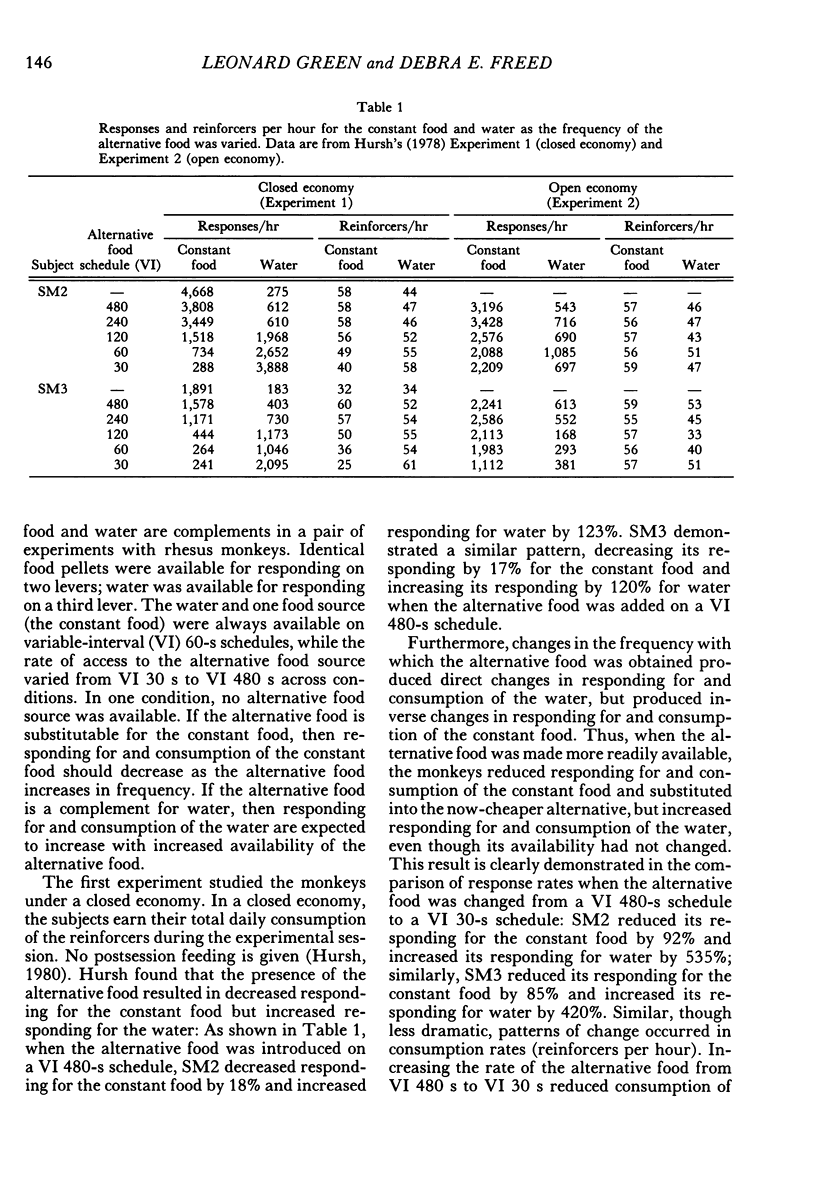
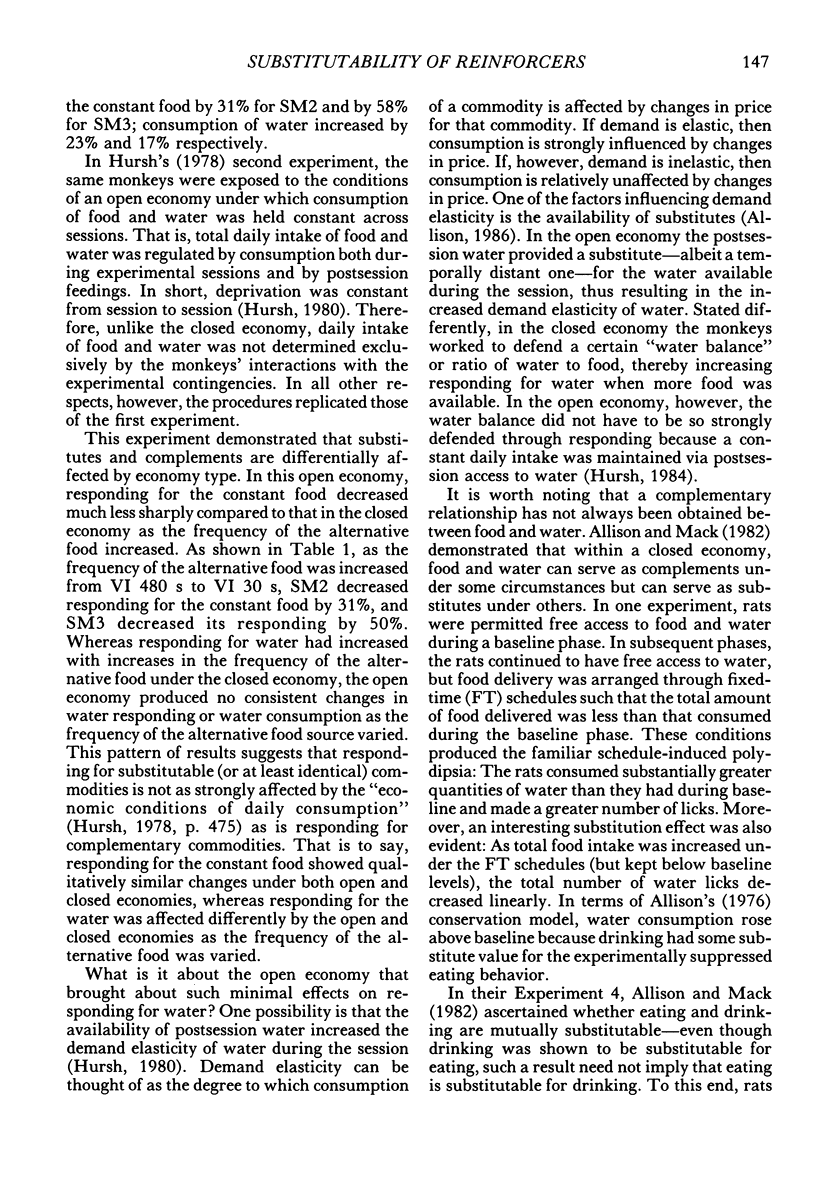
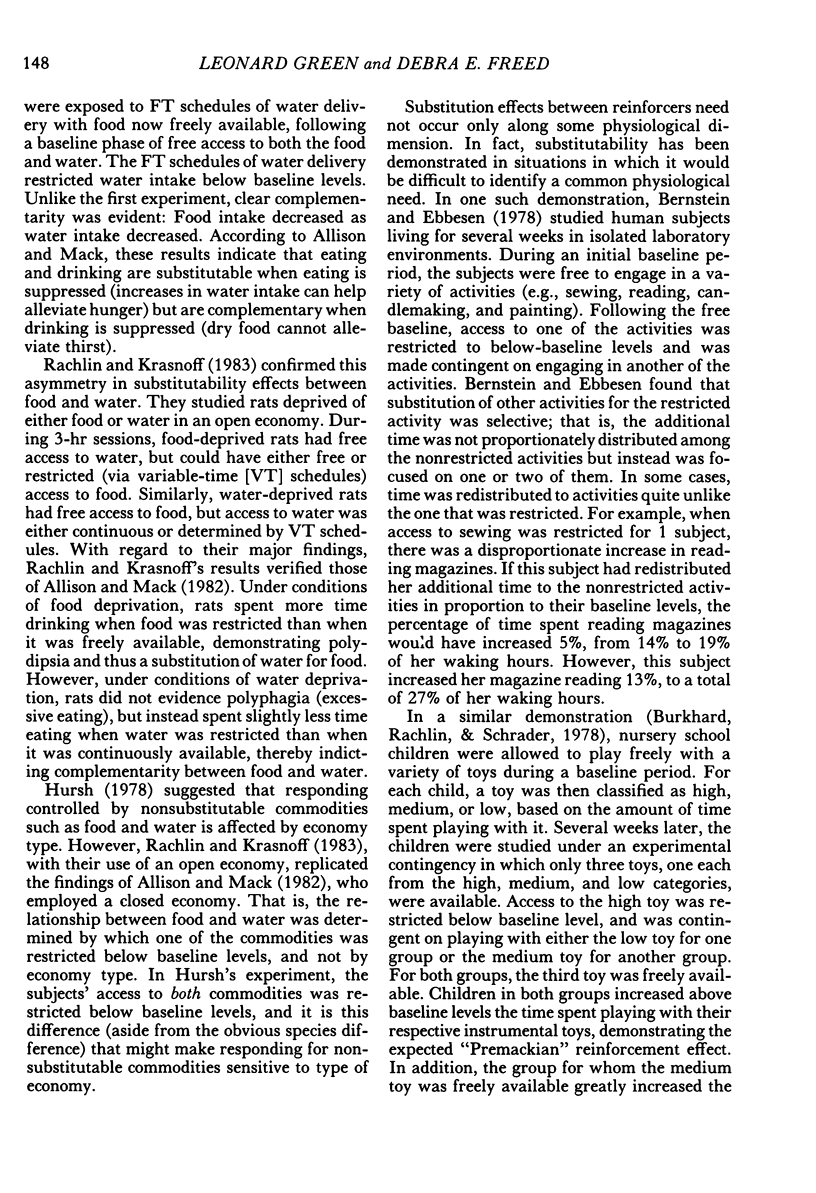
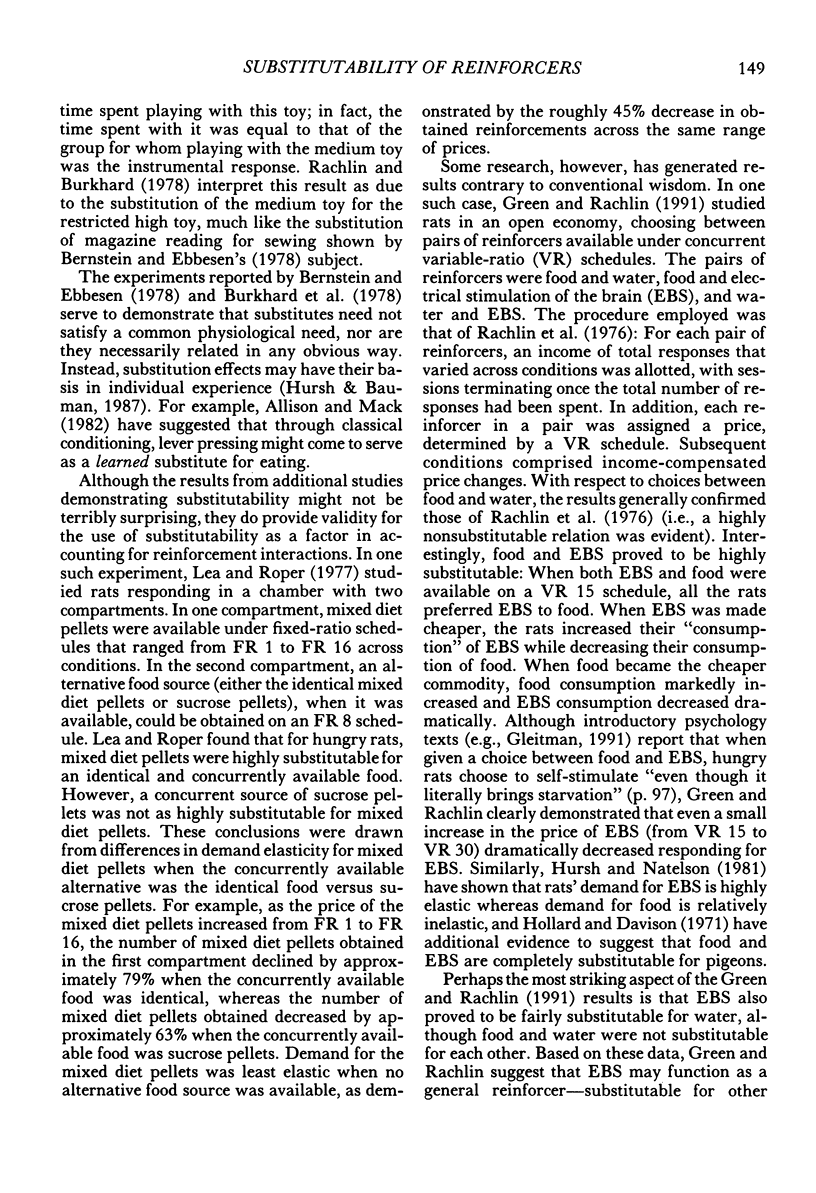
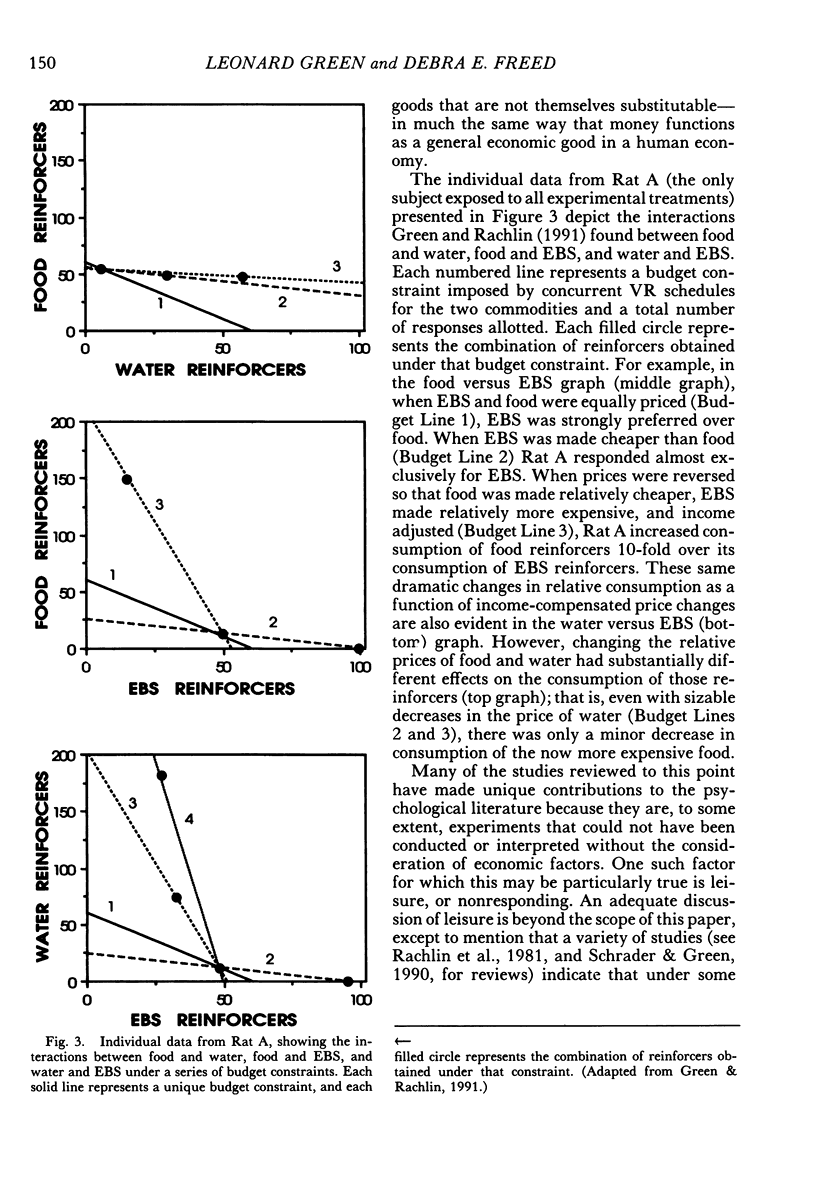
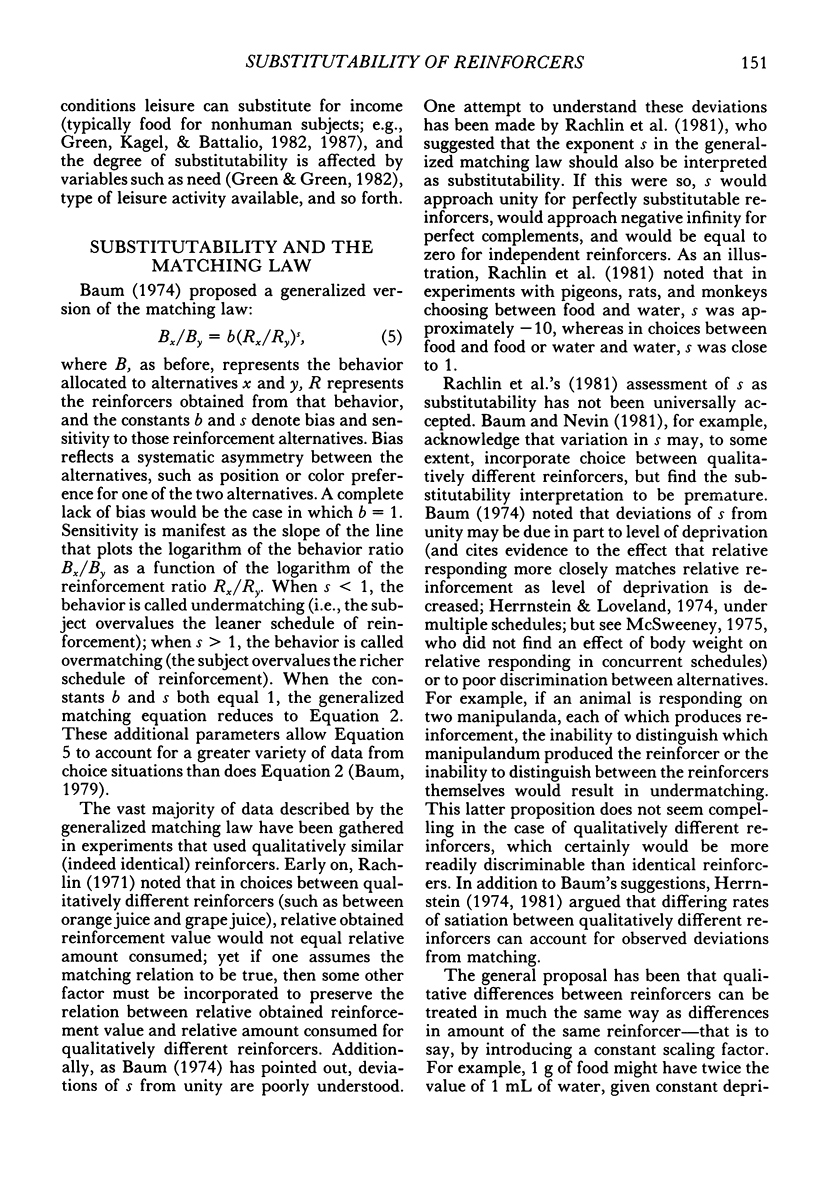
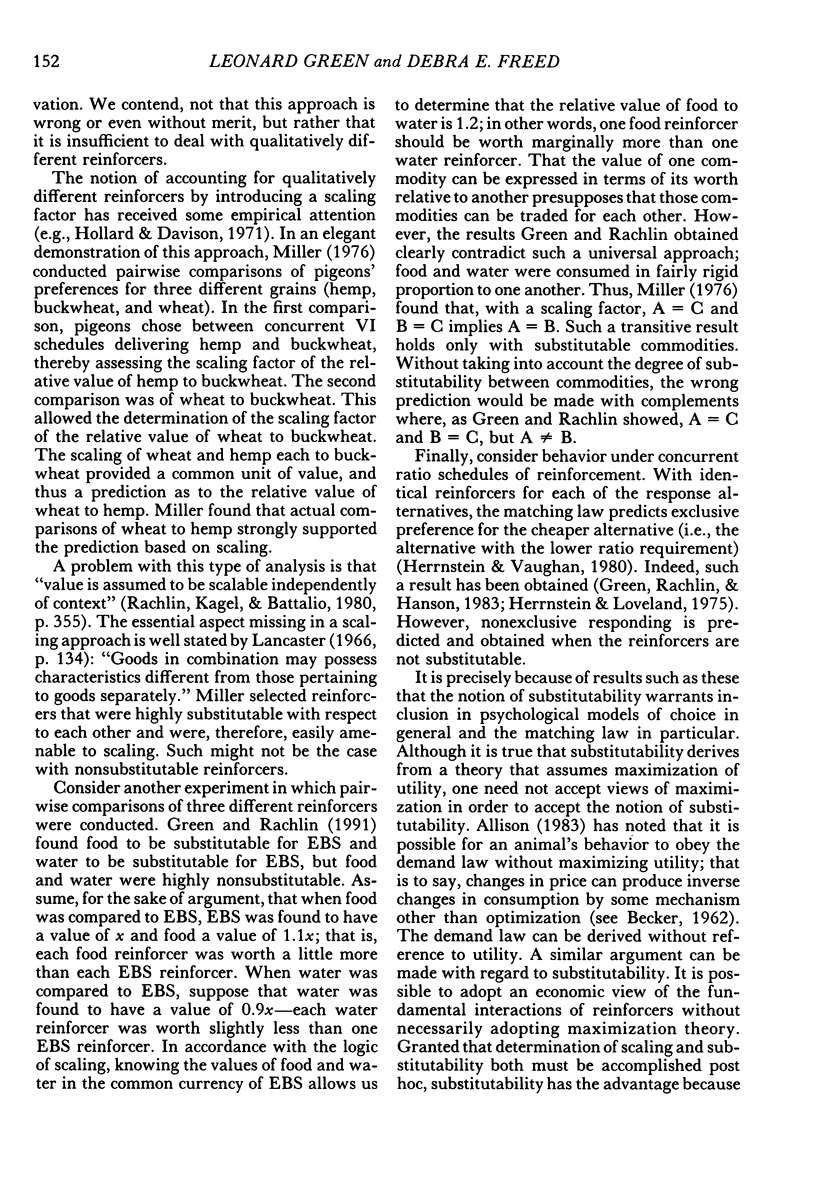
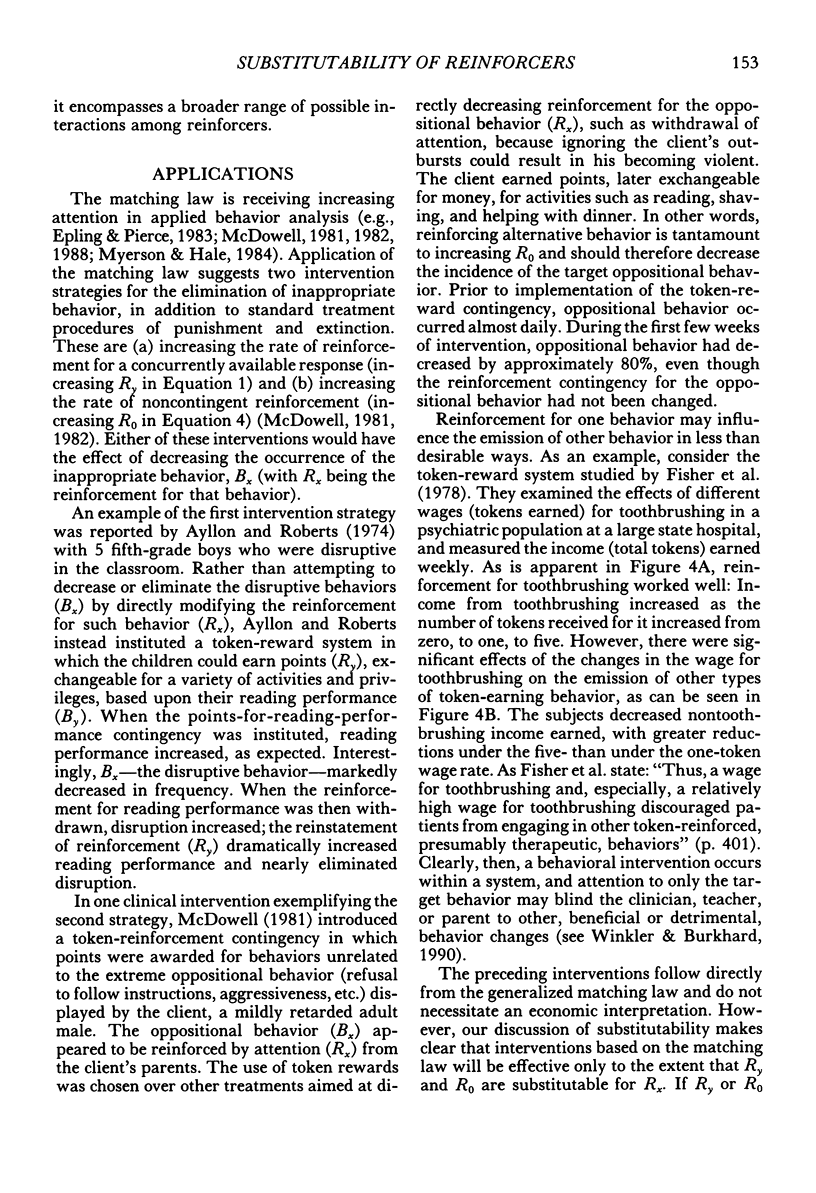
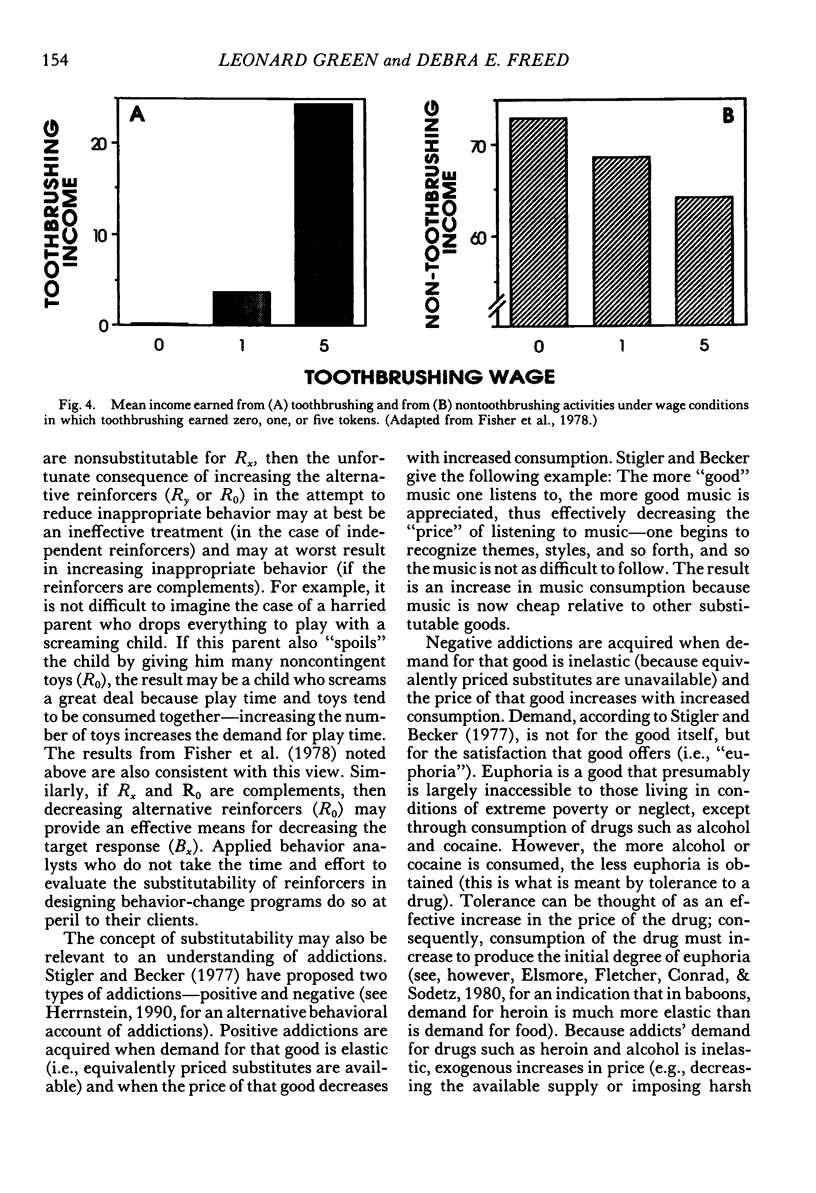
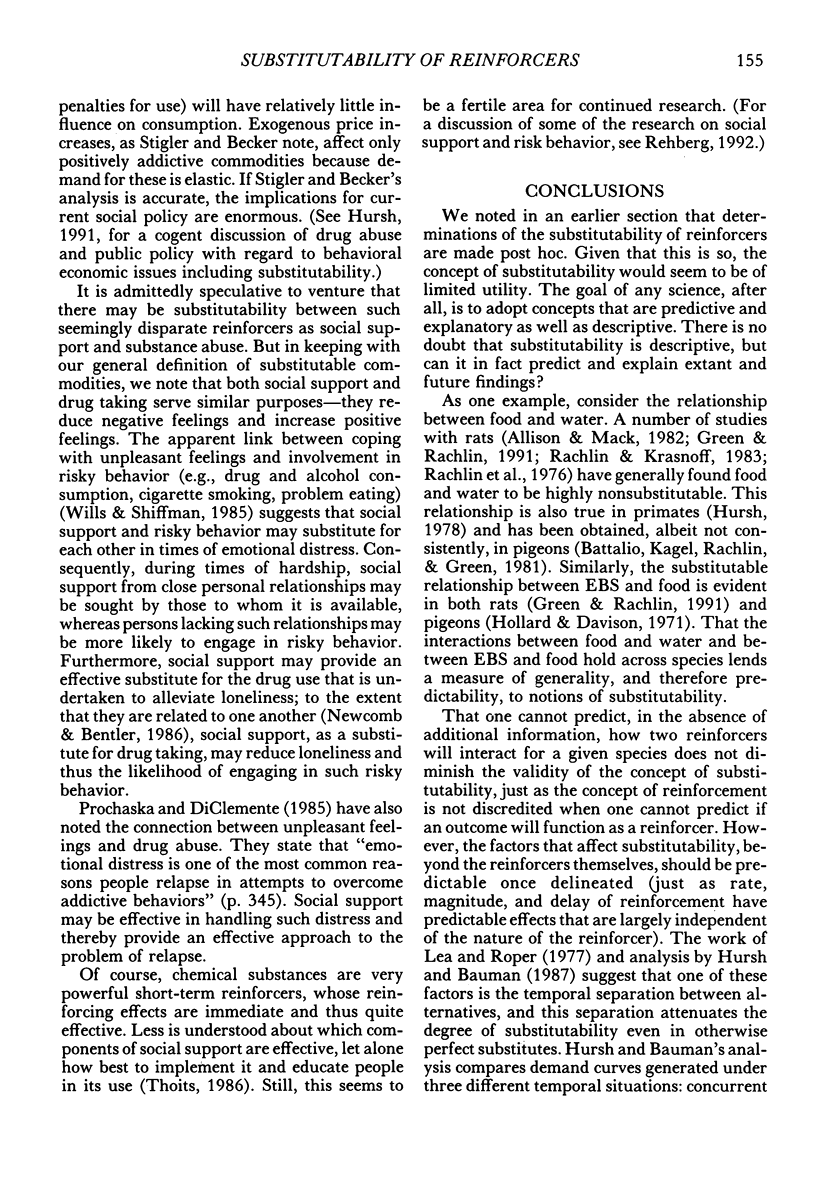
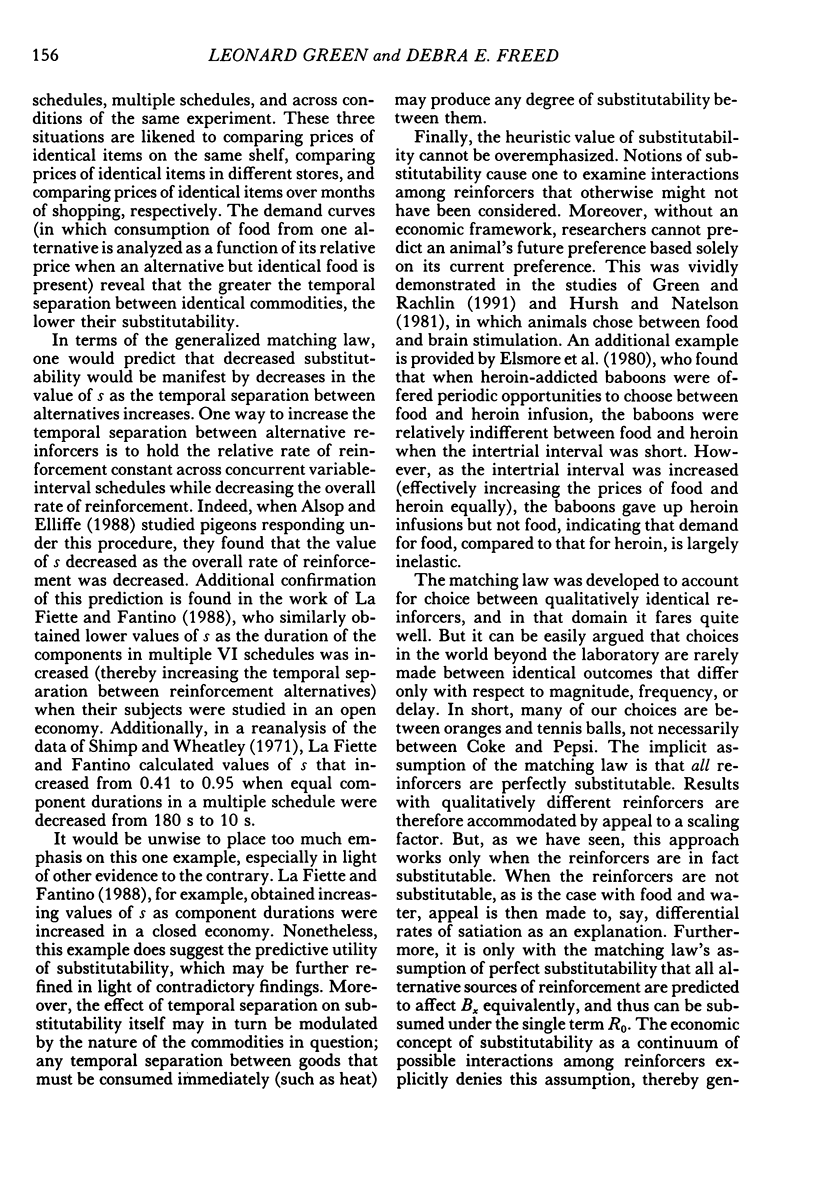
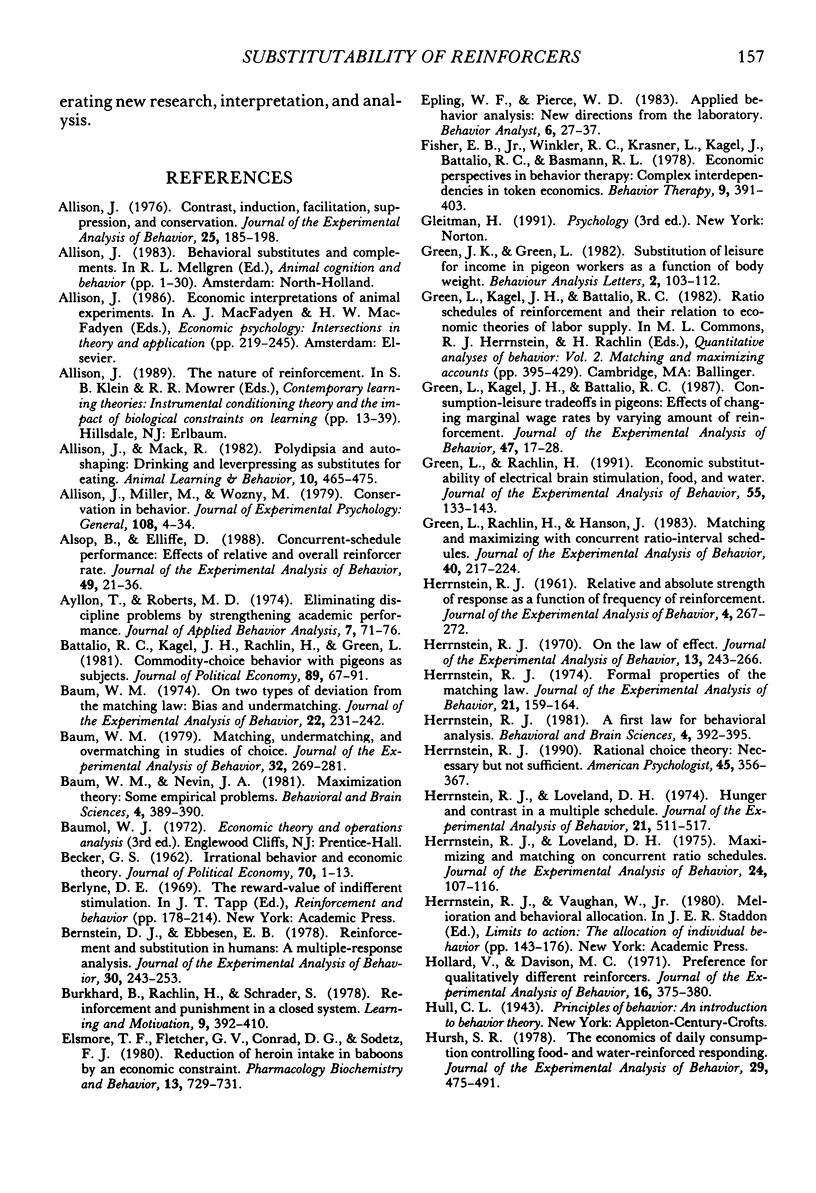
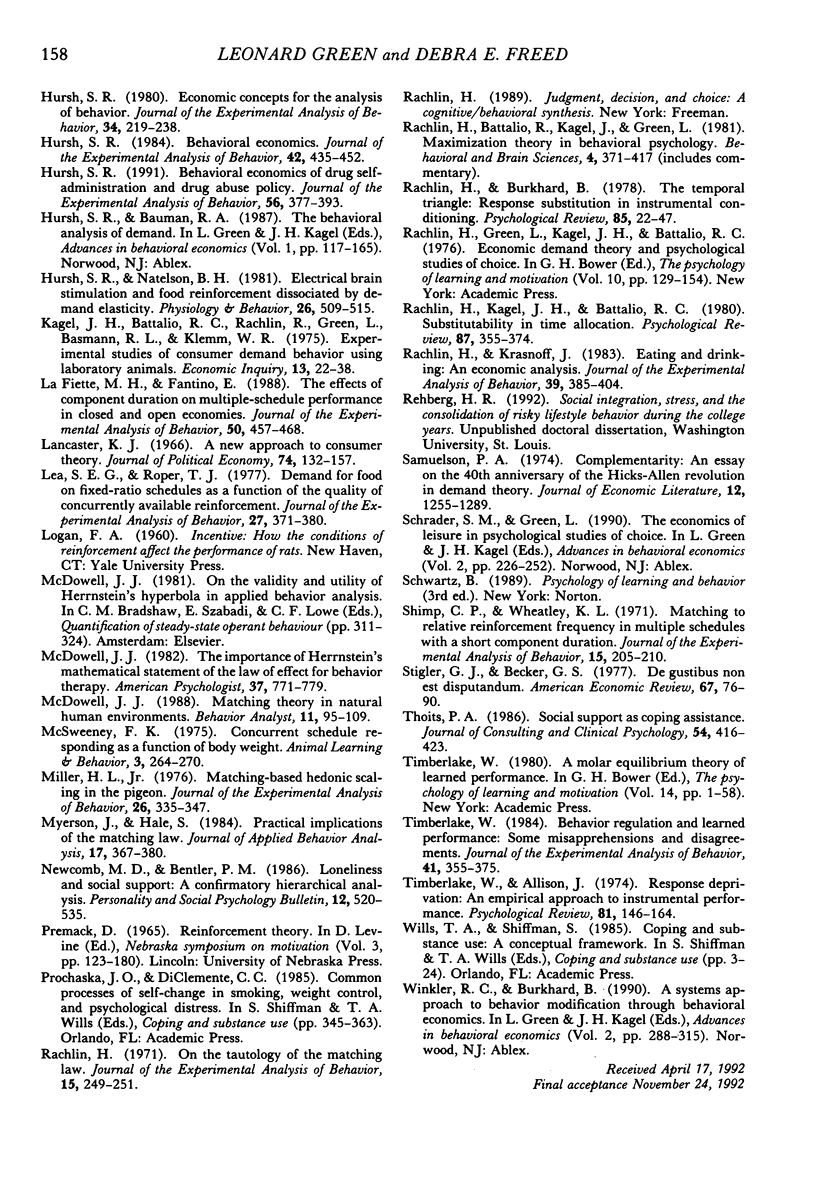
Selected References
These references are in PubMed. This may not be the complete list of references from this article.
- Allison J. Contrast, induction, facilitation, suppression, and conservation. J Exp Anal Behav. 1976 Mar;25(2):185–198. doi: 10.1901/jeab.1976.25-185. [DOI] [PMC free article] [PubMed] [Google Scholar]
- Alsop B., Elliffe D. Concurrent-schedule performance: Effects of relative and overall reinforcer rate. J Exp Anal Behav. 1988 Jan;49(1):21–36. doi: 10.1901/jeab.1988.49-21. [DOI] [PMC free article] [PubMed] [Google Scholar]
- Ayllon T., Roberts M. D. Eliminating discipline problems by strengthening academic performance. J Appl Behav Anal. 1974 Spring;7(1):71–76. doi: 10.1901/jaba.1974.7-71. [DOI] [PMC free article] [PubMed] [Google Scholar]
- Baum W. M. Matching, undermatching, and overmatching in studies of choice. J Exp Anal Behav. 1979 Sep;32(2):269–281. doi: 10.1901/jeab.1979.32-269. [DOI] [PMC free article] [PubMed] [Google Scholar]
- Baum W. M. On two types of deviation from the matching law: bias and undermatching. J Exp Anal Behav. 1974 Jul;22(1):231–242. doi: 10.1901/jeab.1974.22-231. [DOI] [PMC free article] [PubMed] [Google Scholar]
- Bernstein D. J., Ebbesen E. B. Reinforcement and substitution in humans: a multiple-response analysis. J Exp Anal Behav. 1978 Nov;30(3):243–253. doi: 10.1901/jeab.1978.30-243. [DOI] [PMC free article] [PubMed] [Google Scholar]
- Elsmore T. F., Fletcher G. V., Conrad D. G., Sodetz F. J. Reduction of heroin intake in baboons by an economic constraint. Pharmacol Biochem Behav. 1980 Nov;13(5):729–731. doi: 10.1016/0091-3057(80)90018-0. [DOI] [PubMed] [Google Scholar]
- Green L., Kagel J. H., Battalio R. C. Consumption-leisure tradeoffs in pigeons: Effects of changing marginal wage rates by varying amount of reinforcement. J Exp Anal Behav. 1987 Jan;47(1):17–28. doi: 10.1901/jeab.1987.47-17. [DOI] [PMC free article] [PubMed] [Google Scholar]
- Green L., Rachlin H. Economic substitutability of electrical brain stimulation, food, and water. J Exp Anal Behav. 1991 Mar;55(2):133–143. doi: 10.1901/jeab.1991.55-133. [DOI] [PMC free article] [PubMed] [Google Scholar]
- Green L., Rachlin H., Hanson J. Matching and maximizing with concurrent ratio-interval schedules. J Exp Anal Behav. 1983 Nov;40(3):217–224. doi: 10.1901/jeab.1983.40-217. [DOI] [PMC free article] [PubMed] [Google Scholar]
- HERRNSTEIN R. J. Relative and absolute strength of response as a function of frequency of reinforcement. J Exp Anal Behav. 1961 Jul;4:267–272. doi: 10.1901/jeab.1961.4-267. [DOI] [PMC free article] [PubMed] [Google Scholar]
- Herrnstein R. J. Formal properties of the matching law. J Exp Anal Behav. 1974 Jan;21(1):159–164. doi: 10.1901/jeab.1974.21-159. [DOI] [PMC free article] [PubMed] [Google Scholar]
- Herrnstein R. J., Loveland D. H. Hunger and contrast in a multiple schedule. J Exp Anal Behav. 1974 May;21(3):511–517. doi: 10.1901/jeab.1974.21-511. [DOI] [PMC free article] [PubMed] [Google Scholar]
- Herrnstein R. J., Loveland D. H. Maximizing and matching on concurrent ratio schedules. J Exp Anal Behav. 1975 Jul;24(1):107–116. doi: 10.1901/jeab.1975.24-107. [DOI] [PMC free article] [PubMed] [Google Scholar]
- Herrnstein R. J. On the law of effect. J Exp Anal Behav. 1970 Mar;13(2):243–266. doi: 10.1901/jeab.1970.13-243. [DOI] [PMC free article] [PubMed] [Google Scholar]
- Hollard V., Davison M. C. Preference for qualitatively different reinforcers. J Exp Anal Behav. 1971 Nov;16(3):375–380. doi: 10.1901/jeab.1971.16-375. [DOI] [PMC free article] [PubMed] [Google Scholar]
- Hursh S. R. Behavioral economics of drug self-administration and drug abuse policy. J Exp Anal Behav. 1991 Sep;56(2):377–393. doi: 10.1901/jeab.1991.56-377. [DOI] [PMC free article] [PubMed] [Google Scholar]
- Hursh S. R. Behavioral economics. J Exp Anal Behav. 1984 Nov;42(3):435–452. doi: 10.1901/jeab.1984.42-435. [DOI] [PMC free article] [PubMed] [Google Scholar]
- Hursh S. R. Economic concepts for the analysis of behavior. J Exp Anal Behav. 1980 Sep;34(2):219–238. doi: 10.1901/jeab.1980.34-219. [DOI] [PMC free article] [PubMed] [Google Scholar]
- Hursh S. R., Natelson B. H. Electrical brain stimulation and food reinforcement dissociated by demand elasticity. Physiol Behav. 1981 Mar;26(3):509–515. doi: 10.1016/0031-9384(81)90180-3. [DOI] [PubMed] [Google Scholar]
- Hursh S. R. The economics of daily consumption controlling food- and water-reinforced responding. J Exp Anal Behav. 1978 May;29(3):475–491. doi: 10.1901/jeab.1978.29-475. [DOI] [PMC free article] [PubMed] [Google Scholar]
- La Fiette M. H., Fantino E. The effects of component duration on multiple-schedule performance in closed and open economies. J Exp Anal Behav. 1988 Nov;50(3):457–468. doi: 10.1901/jeab.1988.50-457. [DOI] [PMC free article] [PubMed] [Google Scholar]
- Lea S. E., Roper T. J. Demand for food on fixed-ratio schedules as a function of the quality of concurrently available reinforcement. J Exp Anal Behav. 1977 Mar;27(2):371–380. doi: 10.1901/jeab.1977.27-371. [DOI] [PMC free article] [PubMed] [Google Scholar]
- McDowell J. J. The importance of Herrnstein's mathematical statement of the law of effect for behavior therapy. Am Psychol. 1982 Jul;37(7):771–779. doi: 10.1037//0003-066x.37.7.771. [DOI] [PubMed] [Google Scholar]
- Miller H. L. Matching-based hedonic scaling in the pigeon. J Exp Anal Behav. 1976 Nov;26(3):335–347. doi: 10.1901/jeab.1976.26-335. [DOI] [PMC free article] [PubMed] [Google Scholar]
- Myerson J., Hale S. Practical implications of the matching law. J Appl Behav Anal. 1984 Fall;17(3):367–380. doi: 10.1901/jaba.1984.17-367. [DOI] [PMC free article] [PubMed] [Google Scholar]
- Rachlin H., Krasnoff J. Eating and drinking: An economic analysis. J Exp Anal Behav. 1983 May;39(3):385–404. doi: 10.1901/jeab.1983.39-385. [DOI] [PMC free article] [PubMed] [Google Scholar]
- Rachlin H. On the tautology of the matching law. J Exp Anal Behav. 1971 Mar;15(2):249–251. doi: 10.1901/jeab.1971.15-249. [DOI] [PMC free article] [PubMed] [Google Scholar]
- Shimp C. P., Wheatley K. L. Matching to relative reinforcement frequency in multiple schedules with a short component duration. J Exp Anal Behav. 1971 Mar;15(2):205–210. doi: 10.1901/jeab.1971.15-205. [DOI] [PMC free article] [PubMed] [Google Scholar]
- Thoits P. A. Social support as coping assistance. J Consult Clin Psychol. 1986 Aug;54(4):416–423. doi: 10.1037//0022-006x.54.4.416. [DOI] [PubMed] [Google Scholar]
- Timberlake W. Behavior regulation and learned performance: Some misapprehensions and disagreements. J Exp Anal Behav. 1984 May;41(3):355–375. doi: 10.1901/jeab.1984.41-355. [DOI] [PMC free article] [PubMed] [Google Scholar]


